Learn the advantages and disadvantages of each mechanism of cloth nappy
Are you considering using reusables on your baby, but don’t know yet the difference between each reusable nappy types? This article is for you! Let’s explore the different types of reusable nappies available in the market. We show you their functioning mechanisms, advantages and disadvantages. By understanding these aspects, you can make an informed decision and choose the best reusable nappy type that suits your needs.
Type 1: All-in-One Nappies
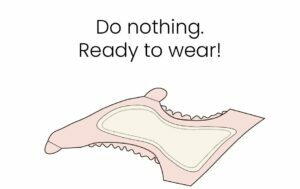
Mechanism Explained:
All-in-One nappies provide convenience similar to disposable nappies. They consist of a waterproof outer cover sewn together with an absorbent inner. Simply snap the nappy around your baby and toss it into your nappy bucket when soiled.
Advantages:
- Easy and quick to change in one step, just like disposables.
- Ideal for child care and grandparents.
- Saves time and mess for parents as it is a single piece for changing, washing, drying and storing.
- Some brands offer double elastic gussets for more effective containment of poop and urine.
- Usually, they provide a slim fit.
Disadvantages:
- Depending on the design, they may take longer to dry.
- Manufacturing complexity often leads to higher purchase costs.
The PICO TANGO Difference
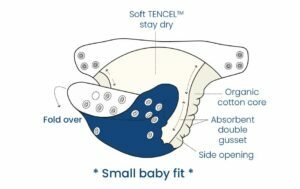
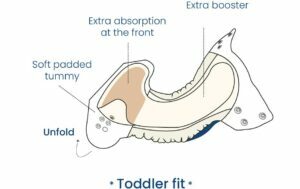
- Improved version V2 with fast drying sewed-in absorbents with TENCEL TM.
- Exclusive patented One-size adjustment technology offers comfortable, durable and effective protection for newborns.
- Features 3 inner absorbents with a double absorbent gusset. A leak-free and poop-free system suitable for night time, naps and longer car journeys.
- Rolled elastics ensure comfort without marks on the baby’s skin.
- Extra booster with enhanced absorption at the front for boys and toddlers.
Now let’s find more reusable nappy types available…
Type 2: All-in-Two Nappies

Mechanism Explained:
All-in-Two nappies have an absorbent inner attached to the waterproof cover using snaps or velcro
Advantages:
- Once snapped together, they are as easy to put on as All-in-One nappies.
- Depending on their design effectiveness, fewer covers might be required as only the soiled diaper inserts need replacement, making them more economical.
- They dry quickly as the absorbent insert can be removed for washing.
Disadvantages:
- Most All-in-Two nappies in the market lack an absorbent double gusset barrier, making them more prone to poop and urine leaks.
- May have to purchase more waterproof covers than the manufacturer’s estimation. The cover easily gets wet in the groin after using the first pad, having to be washed again, otherwise it quickly leaks.
- They require more effort for parents, as the absorbent pad needs to be attached to the waterproof cover before and after each use, and more pieces need to be washed, dried, and folded.
Type 3: Pocket Nappies
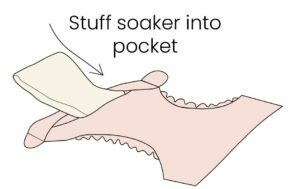
Mechanism Explained:
Pocket nappies consist of a waterproof cover lined by a stay-dry synthetic material in contact with the baby’s skin . An opening (pocket) is left between them along the back of the diaper, allowing parents to stuff an absorbent insert into it.
Advantages:
- Once pre-stuffed, pocket nappies are as easy to put on as All-in-One nappies.
- They dry quickly, as the absorbent insert can be removed for washing.
- Some brands feature double elastic gussets for better containment of poop.
Disadvantages:
- Pocket nappies are usually more prone to leaks due to:
- First, most available designs use encased elastics, which have extra sewing holes in the gussets. These holes cause leaks when in contact with the wet stuffed absorbent pad.
- And then, even when designed with a double gusset barrier, the inner elastic gusset is not made of an absorbent material, allowing urine to quickly reach the outer leg gussets.
- Removing the soaked wet insert from the inside of the nappy can be unpleasant.
- They require more effort for parents, as the pocket needs to be stuffed with the absorbent pad before and after each use, and more pieces need to be washed, dried and folded.
Type 4: Fitted Nappies
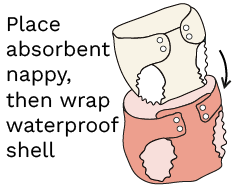
Mechanism Explained:
Fitted nappies are absorbent diapers shaped to fit your baby, closed with hook & loop or snaps. They require a waterproof cover over them, also closed with velcro or press snaps.
Advantages:
- Typically offer excellent poop containment due to the double gussets provided by the absorbent nappy and the cover on top.
- Often very absorbent, making them suitable for night time, naps or longer car journeys.
Disadvantages:
- Changing fitted nappies is not the most convenient process, as it involves fastening the absorbent part and the waterproof cover separately. This can become challenging as your baby grows and becomes more impatient during diaper changes.
- They require more effort for parents, not only during changing but also for washing, drying, and folding more pieces.
- They may cause some discomfort during tummy time due to the double fastenings around the baby’s belly.
- Depending on the absorbency of the diaper, they may take longer to dry.
- Fitted nappies usually require more material and a separate waterproof cover, making them a more expensive system.
- They tend to be bulky.
Finally, the last reusable nappy types are the ones that you grandmother used!
Type 5: Flats, Pre-folds, and Pre-flats
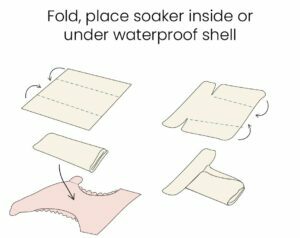
Mechanism Explained:
Flats are rectangular or square absorbent fabric pieces that you fold to fit inside a separate waterproof cover, which is then fastened around the baby. Pre-folds are an evolution of flats, featuring three parts divided by two vertical seams for simpler and faster folds, with the central part reinforced for additional absorbency. Pre-flats optimize the flats system, so they are easier to put on and fit the baby’s body shape more nicely.
Advantages:
- Flats and pre-folds are the most economical options for those on a tight budget.
- You can fold the fabric in different ways to accommodate different sizes.
- You can use flats and pre-folds as boosters for other nappies.
- They dry quickly, as they can be unfolded into a flat piece of fabric.
- Pre-flats offer a more intuitive fit compared to flats and pre-folds.
Disadvantages:
- Changing is not the most convenient process, as they become more difficult to stay in place as your baby grows and moves during the nappy change.
- These don’t have an elastic barrier, so are more prone to leaks.
- They require more effort for parents, not only during changing but also for washing, drying and folding more pieces.
- They need a snappi or boingo and a separate waterproof cover.
So these are the different reusable nappy types that you will find. We hope this article was helpful to you and that now you can make an informed decision about which mechanism works better for you. For more tips and helpful insights on reusable nappies, check out the best tips before buying.
